Despite the brutal chaos of the world, I continue to watch or listen to the news most days of the week. It can quickly move me to despair but I can’t hide or turn away. Three themes are dominating 21st-century media:
The Earth is burning.
Powerful, evil men are capable of horrible brutalities.
We are surrendering our voices, privacy, freedoms, and collective values of decency and goodness.
I look to those wiser than me to counter these depressing realities for explanations, wisdom, and possible solutions. Dr. Martin Shaw, mythologist, storyteller, and writer, returns to the ancient stories of humanity to offer old lessons for modern applications. I recently read his compelling book, Smokehole: Looking to the Wild in the Time of the Spyglass, and I have been pondering this statement:
We make things holy by the attention we give them.
In his interpretation, the spyglass is modern technology and our increasing obsession with - even addiction to - digital media.
Have we made it holy?
In 2021, adults in the U.S. spent an average of 485 minutes (eight hours and five minutes) daily with digital media. This figure marked an increase of 11 minutes compared to the previous year. (Statista)
The effects of addictive digital consumption are experienced, directly or indirectly, by each of us:
Constant checking of social media
Bullying, name-calling, and nasty online behaviors
Non-stop promotion of goods, misinformation, and political agendas
Doom scrolling, depression, cynicism, and anxiety
Reconfiguration of our neural networks
Sedentary, fearfulness and silenced
My solution was to eliminate most of my social media, unfriend the hundreds of “friends” I didn’t actually know, curate my feed to support my interests, block everyone who misbehaves within those groups, and rigorously monitor my time spent on it. It worked and my social media is filled with photos of areas I want to visit and book recommendations.
I replaced the mindless scrolling with more time outdoors, via relaxing, gardening, hiking, and camping. Outside, even the mundane can become joyous: hanging laundry outside on the first warmish day of late winter, emptying the compost bucket into the compost bin and catching the pink sky of a sunset I can’t see from my forested homestead, retrieving the mail and seeing the first trillium of the season.
How we spend our days is, of course, how we spend our lives. What we do with this hour, and that one, is what we are doing. ~ Annie Dilliard
The beauty within nature is enough to keep me riveted but my curiosity drives me to learn more. I want to be a better human in this relationship. My backpack usually includes a plant ID book, and I have nature apps on my phone. My hiking is not aerobic - I brake for wildflowers blooms, shrubs & trees, lichens & mosses, fruits & seeds, animal sitings and sometimes to just taste the air.
Most of my life has been centered around spending time outside and learning about the lives of other species. My curiosity has led me to study botany, ecology, gardening, herbalism, native plants, permaculture, and most recently, natural dyes using plants. Conservation, restoration strategies, and government policies are part of the learning process but my least favorite topics.
My relationship with nature is sacred to me and is now the longest one in my life. As I age, I find it one of the most important relationships I maintain. The daily attention I give to nature has made it holy in my life. I’ve noticed that I linger longer outdoors, doing nothing except to sit in the garden or sit down for snack break on a hike, simply listening and observing. And that’s me taking another photo of Mount Adams on my daily walk because it looks different from season to season, day to-day. Perhaps it is my new-ish awareness of the finiteness of my life - those fifteen years and hopefully counting.
In the natural world, I find hope, resilience, wonder, relationships, joy, reciprocity, and awe.
Our relationship with nature is ancient (we’ve lived in nature for 5 million years) and modern research indicates that there are important benefits to spending regular time in nature:
Moves our bodies
Lowers blood pressure & aids healing
Alleviates negative stress and thinking
Enhances creativity, clear thinking, and problem-solving
Serves as a bonding mechanism with others
Develops kinship with other species
Engages all of our senses
Develops our ability to pay attention, to see patterns and connections
Inspires awe, wonder, and joy
Motivates learning through curiosity
One day last week, I spent the morning in my office writing on my computer, practicing poor posture, and drinking too much coffee. I stood up to stretch, peeked out the window, and watched the white-gray cloud cover slowly open to reveal a blue sky. The weather was warmer than usual for early February and I felt the familiar pull to be outside.
A hike was in order.
I called a friend who agreed to join me and 45 minutes later, we headed down the backroads to the Klickitat River Trail. This former railroad grade follows the designated Wild and Scenic Klickitat River and is accessible throughout the year.
Take a walk with me.
Klickitat River Canyon
The river’s headwaters originate from the Yakama Indian Reservation on the southwest flanks of Mount Adams, narrowing into this canyon, eventually emptying into the Columbia River.
Trail
There are 31 miles of mostly flat trail with different access points that gives a user the opportunity to see how the river has carved its way through different landscapes. At the south end, the trail is wide and allows hikers, mountain bikers, and in the winter, cross-country skiers to use the trail. During the summer, half of the trail system is closed due to wildfire concerns.
Licorice Fern
Living in a snow-covered landscape for the last few months, my eyes immediately gravitated to this bright green patch of Licorice Fern. Named because the rhizomes taste like licorice.
Osprey/Eagle Nest Platform
In January, as many as 60 bald eagles migrate from various places to the Klickitat River to feed off the dead salmon carcasses who (I prefer animate pronouns for our co-species) returned to the river to spawn. Osprey adapted quickly to human-made platforms and eagles are starting to do the same. The bald eagle recovered dramatically once DDT was banned and the PNW has an abundance of them. These human-made platforms are a common sight along rivers.
Lichen & Oak Leaves
Lichens are composite organisms of fungi and algae who maintain a symbiotic (mutually beneficial) relationship. There are more than 1000 species of lichens in the PNW, appearing in 7 different growth forms: dust, crust, scale, leaf, club, shrub, and hair. The area hosts a population of Oregon White Oak trees that prefer the lower elevation and drier climate.
Lichen on Downed Branch
Leaf lichen hangs off of many of the trees in this region. Some people call it moss but moss and lichens are are not similar nor related. I know next to nothing about lichen or moss but my curiousity has led me to order some books and begin a study of them this year.
Wall Screw Moss
I am not positive on this ID but I do love the name! I think the stems growing up from the moss are called seta and are part of its reproductive system.
River’s Edge
A rocky beach is a perfect place to spot rattlesnakes warming in the mid-day sun. Be careful where you step.
Indigenous Fishing Platform
Local tribal members practice traditional dip net fishing using these platforms. When the salmon return to their home rivers to spawn, fisherman stand on the platform with a long handled dip net to catch fish. As part of their treaty agreements, there are multiple in-lieu fishing sites in our region.
My hiking companion and I are afflicted with the peculiar hiker’s curiosity: “Where does that trail go?” and “Let’s just go a bit more around that bend.” But it was time to turn back. With a slower gait, we headed back to our vehicle and checked our devices. My smart watch reported 5.5 miles, her smartphone reported 4.5 miles, my arthritic hips said clearly it was 10 miles but my heart and soul said, who cares…you were outside, walking, talking, observing and listening to the river rush by you.
I would love to hear about what is holy in your life. Is it your faith, your family, nature, or a practice? Do you have a favorite place to walk?


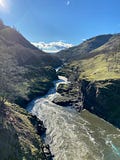


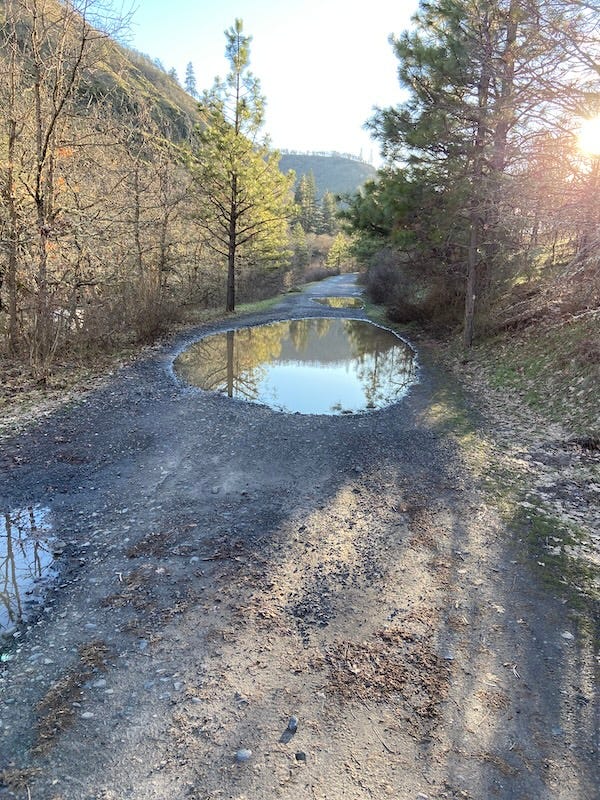
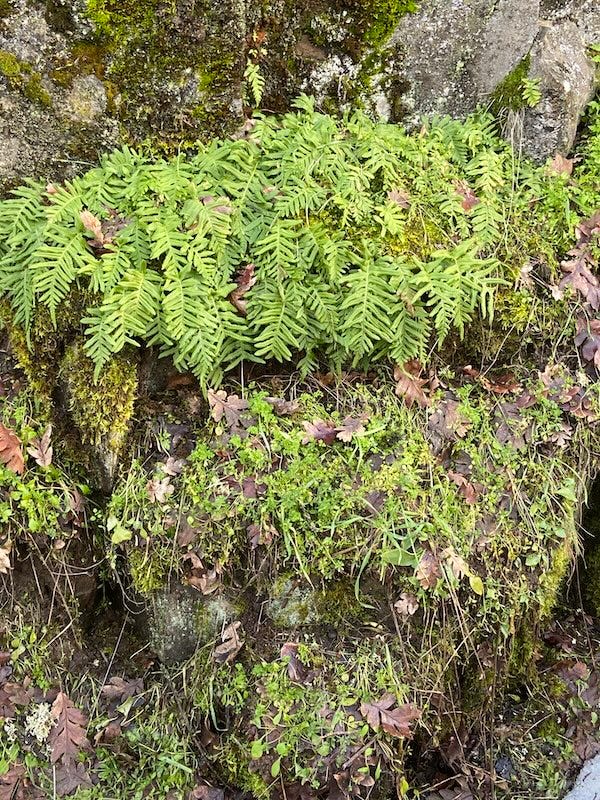
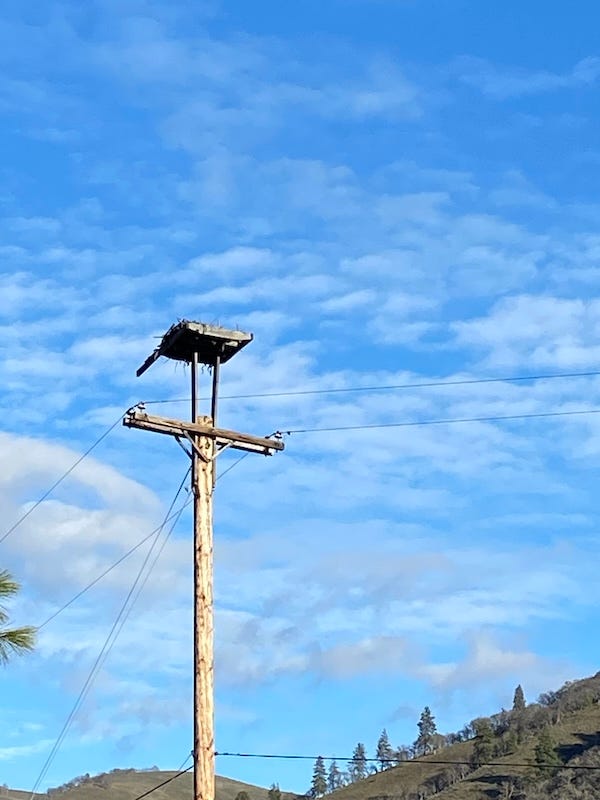

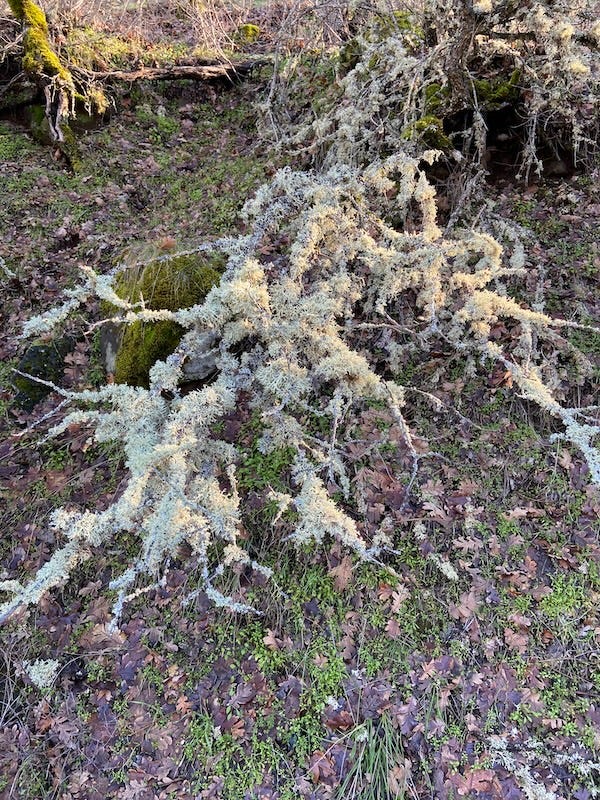
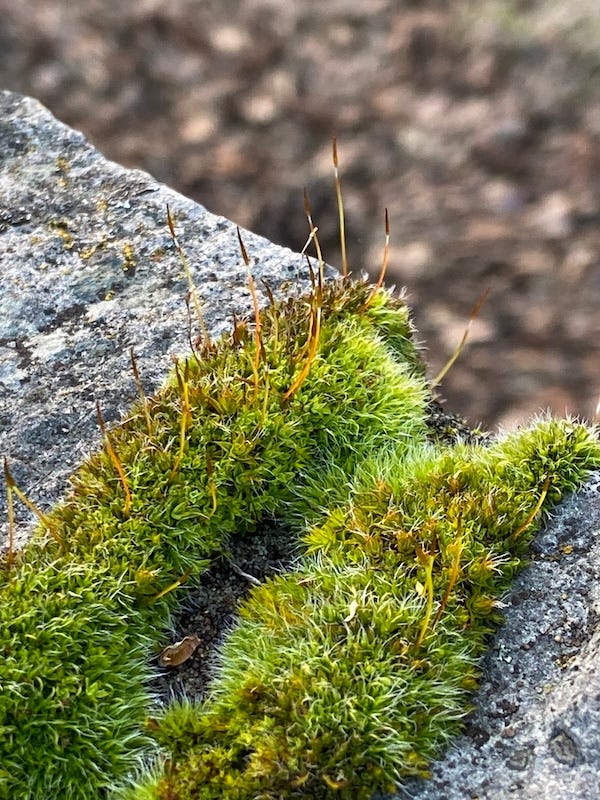
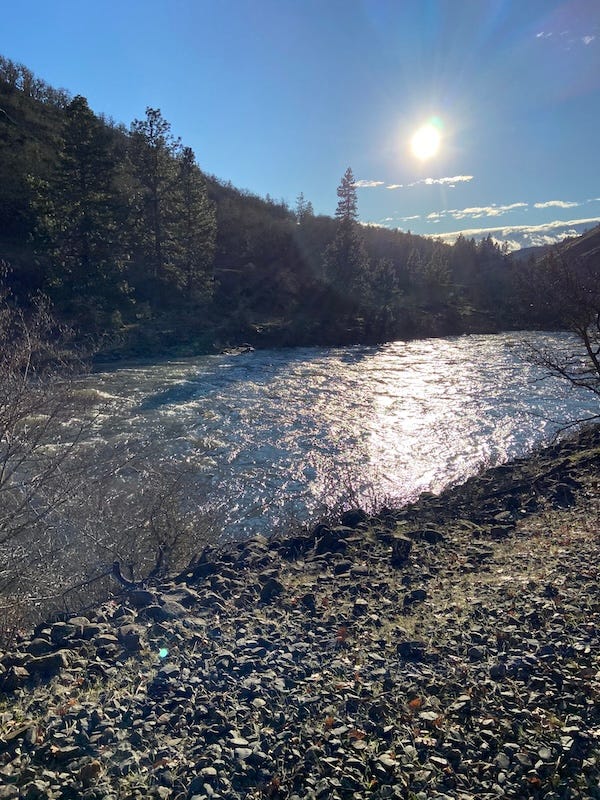
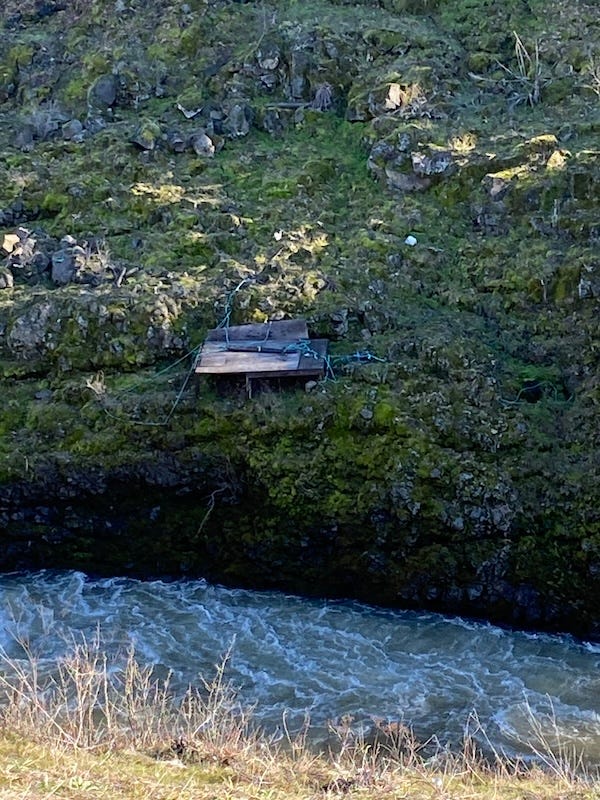
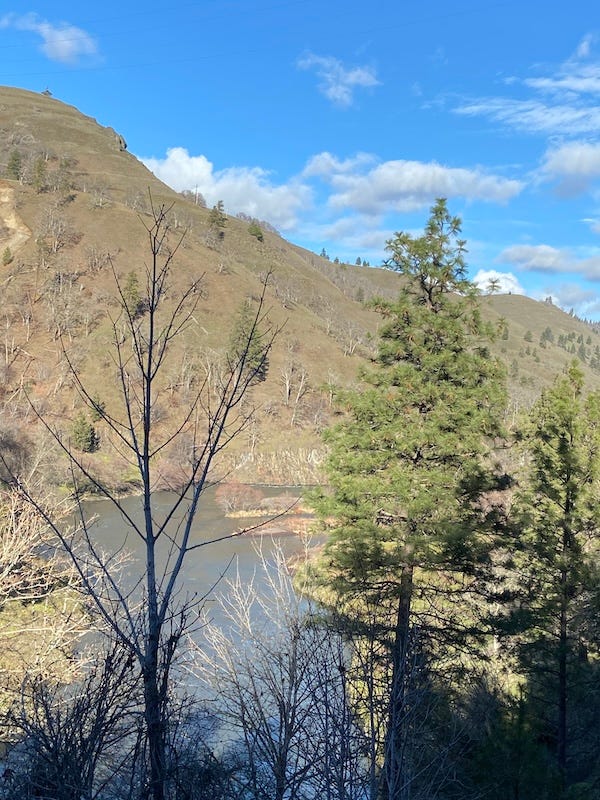
Goodness, the words you've written here reside in my soul, too. Not often I come across someone who reads Martin Shaw. I can't agree more about the digital age; I've been off social media for several years, except for Instagram where I barely maintain a presence. Social media gives me an instant feeling of "ick." Thank you for taking us on your hike and all of the observations you've given us. Hiking is my lifeblood. Nature is my holy, my favorite place to walk is in north central Montana in the Bear Paw Mountains.
Every evening, I go on a short walk with my dog friends from one end of our property to the other and back. We are religious about our nightly walk and I have gone so far as clearing a walking path with the tractor when moving snow around the property. Halfway on this brief walk, I stop at a boulder that was placed on the property by a previous occupant. On my way back, I stop at the boulder, turn off my flashlight, stand still, look, and listen. When I first started this practice of standing still on the walk, I found myself feeling pensive and sometimes emotional. I kept up the practice and eventually I learned to be comfortable being still with myself and with nature, appreciating silence, listening to the breeze through the trees, and sometimes listening to my dog friends abruptly engaging with a small critter as it scrambles to a neighboring property. I’ve seen shooting stars and passenger planes at high-elevations (likely Portland bound). I take in the evening breeze or the smell of falling rain. A few seconds later, I turn on the flashlight and we head back. Sue, your article helped me realize that this is a meditation, my holy experience. Thanks very much. Love - Jenne